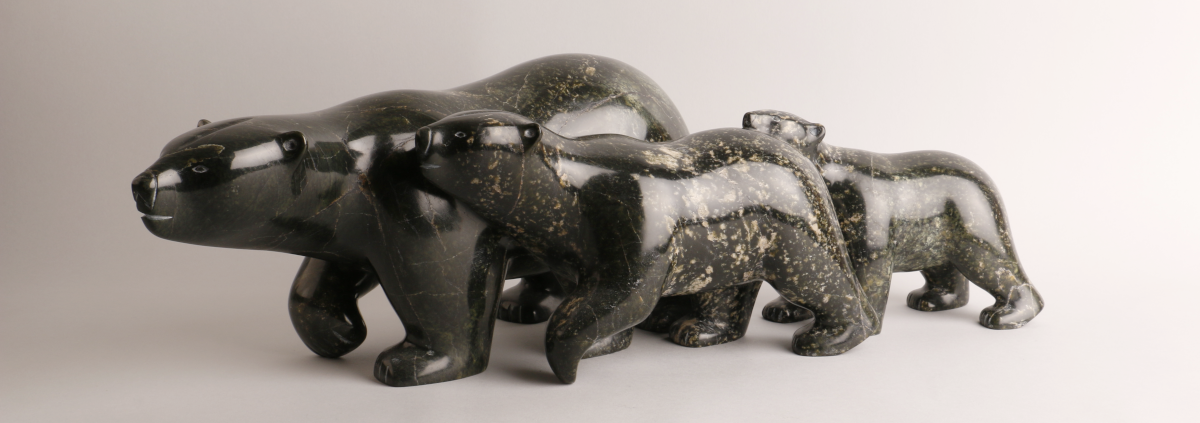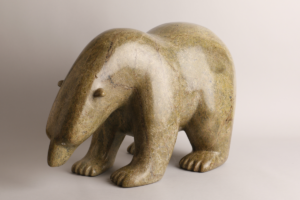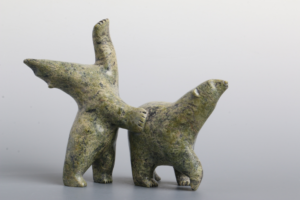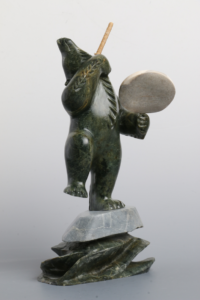Polar Bears
Polar bears (Ursus maritimus) live almost exclusively on pack ice; some of them have never had solid ground under their paws in their entire lives. The animals are perfectly adapted to life in the Arctic. Their thick fur and a thick layer of fat protect them from the icy cold. Skin protrusions on the soles of their feet act like tiny suction cups, preventing them from slipping on the ice. The fact that polar bears have the smallest ears compared to other bears is a concession to the cold climate. However, the rest of their body mass is enormous: an adult male can weigh over 900 kg and reach a length of 3.1 meters.
Sniffing Bear by Adamie Ashevak, Kinngait (Cape Dorset) 2003
(Photo: © Canadian Arctic Gallery, Switzerland)
Polar bears can smell their prey at a distance of up to 32 km, which is why they occasionally stand on their hind legs to filter the air better. They also stand on their hind legs to wrestle with other bears and thus train their muscles.
Bears by Noo Atsiaq, Kinngait (Cape Dorset), 2009
(Photo: © Canadian Arctic Gallery, Switzerland)
But polar bears play an important role in Inuit shamanism too. As the king of the Arctic – respected and admired for their endurance and strength – they are the most important helping or protective spirits of a shaman. The “dancing” polar bears frequently depicted in Inuit art are also to be understood as a symbol of a helping spirit or the representation of a transformation of the shaman into a polar bear. Through this transformation, the shaman gains the animal’s power, enabling him to complete the tasks set on his spiritual journey.
Dancing Bear by Darrold Taylor, Tuktoyaktuk, 2014
(Photo: © Canadian Arctic Gallery, Switzerland)






